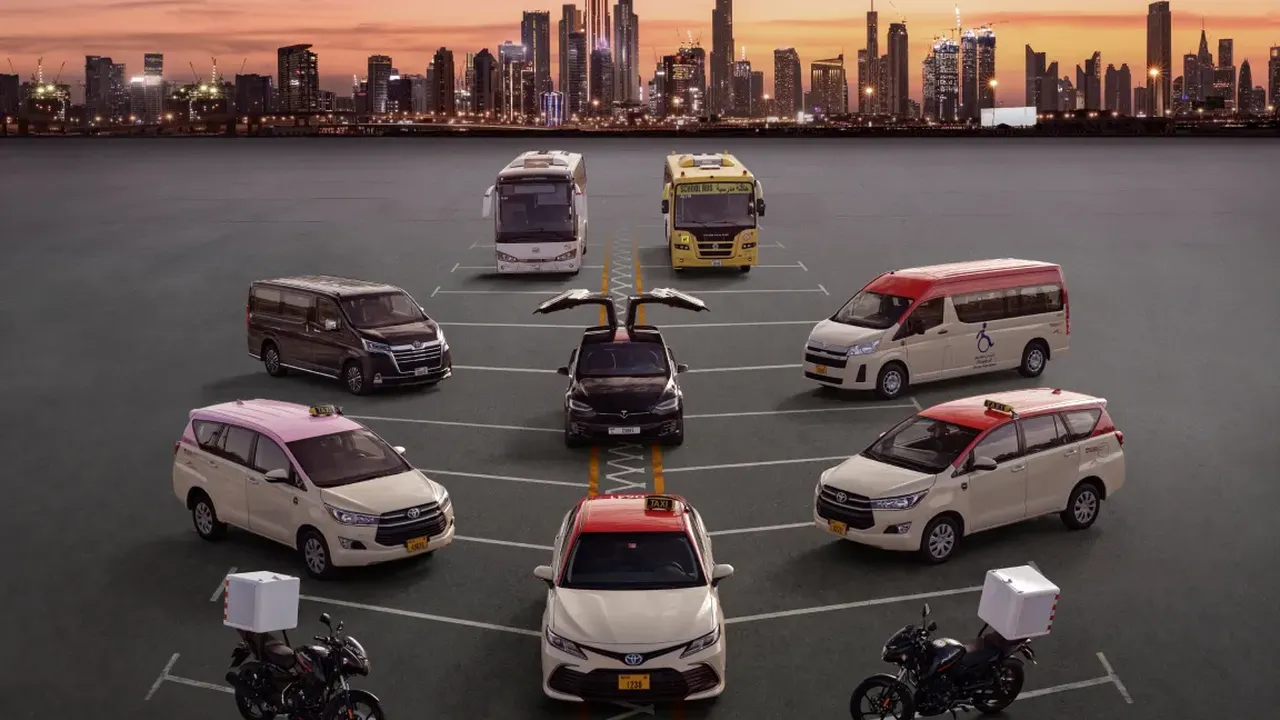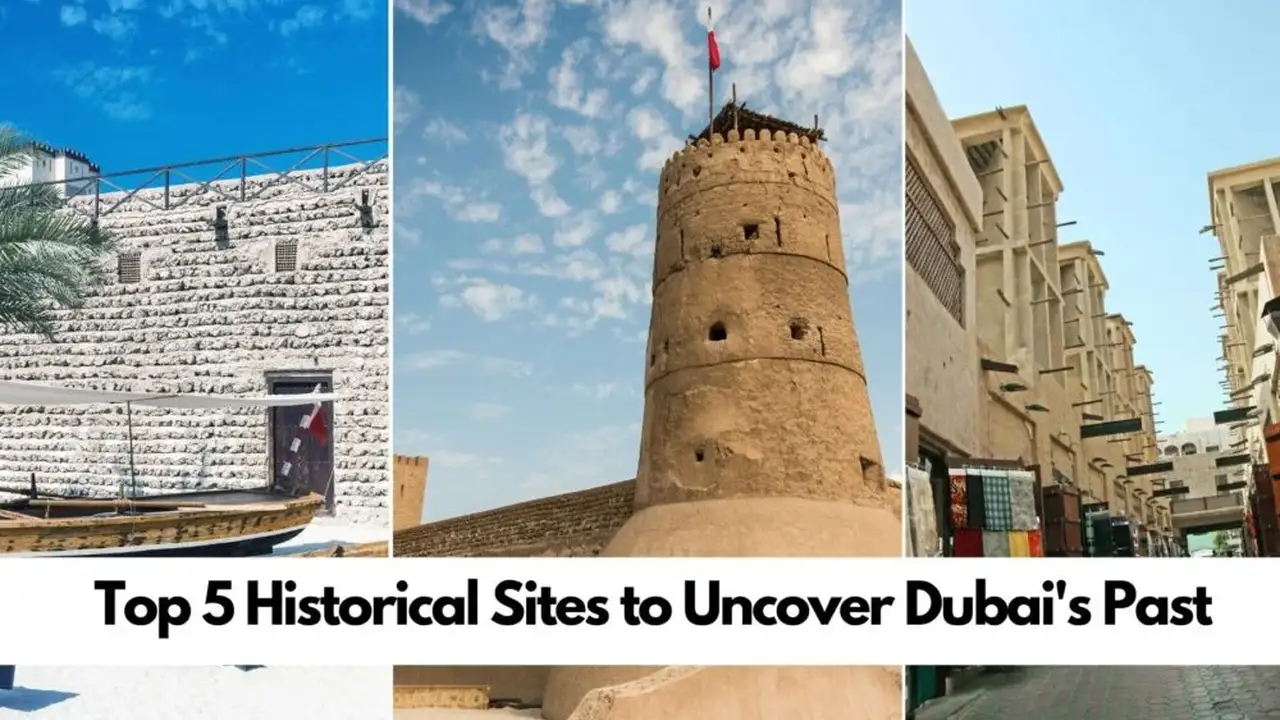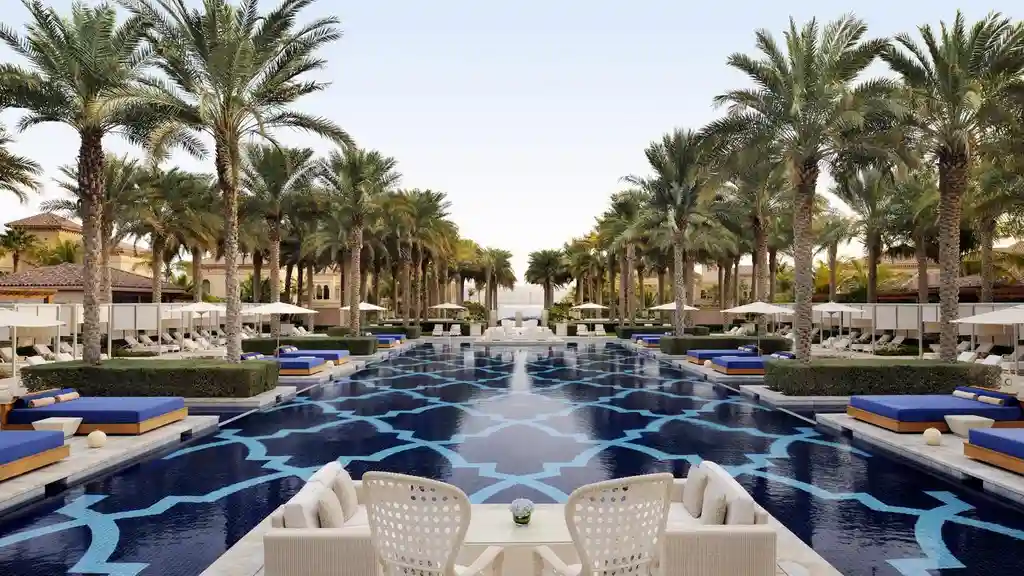Comparing Transportation Options in Dubai Metro Taxi and More
Navigate Dubai efficiently with this comparison of transportation options, including the Metro, taxis, and ride-sharing services for easy travel.

Comparing Transportation Options in Dubai Metro Taxi and More
So, you've landed in Dubai, a city of dazzling skyscrapers, sprawling malls, and endless adventures. But how do you get around this magnificent metropolis? Don't sweat it! Dubai boasts a world-class transportation network that's both efficient and diverse. Whether you're a budget traveler, a luxury seeker, or someone who just wants to get from A to B with minimal fuss, there's an option for you. Let's dive deep into the various ways to traverse Dubai, comparing their pros, cons, costs, and best use cases.
Dubai Metro Your Gateway to the City's Highlights
The Dubai Metro is often hailed as the backbone of the city's public transport system, and for good reason. It's clean, modern, air-conditioned, and incredibly efficient. With two main lines – the Red Line and the Green Line – it connects most of Dubai's major attractions, business districts, and residential areas. Think of it as your express ticket to places like the Burj Khalifa, Dubai Mall, Mall of the Emirates, and Dubai Marina.
Nol Card Your Metro Travel Companion
To use the Dubai Metro, you'll need a Nol Card. This smart card is your key to seamless travel on the Metro, buses, trams, and even some water buses. There are several types of Nol Cards, each catering to different needs:
- Red Ticket (Paper Ticket): This is a disposable paper ticket, ideal for tourists or infrequent users. You can load up to 10 trips on it. It's convenient for a quick visit but can be more expensive per trip in the long run.
- Silver Card: A rechargeable plastic card, perfect for regular commuters or tourists staying for a few days. It offers better value than the Red Ticket and can be topped up at any Metro station or RTA customer service center.
- Gold Card: For those who appreciate a bit of luxury, the Gold Card grants you access to the Gold Class cabins on the Metro. These cabins offer more spacious seating and fewer crowds, making for a more comfortable journey. It costs a bit more per trip, but if you value comfort and quiet, it's worth considering.
- Blue Card (Personal Card): This is a personalized card with your photo, primarily for residents. It offers discounted fares and can be used for various RTA services.
Pricing: Fares are calculated based on the number of zones you travel through. A single trip can range from AED 3 to AED 7.50 for a Silver Card, and double that for a Gold Card. For example, a trip from Dubai Marina to Burj Khalifa/Dubai Mall (crossing multiple zones) would typically cost around AED 5-7.50 with a Silver Card.
Best Use Case: The Metro is fantastic for sightseeing, especially if you're visiting popular landmarks along the Red Line. It's also excellent for avoiding traffic congestion during peak hours. It's generally the most cost-effective way to get around for individual travelers or small groups.
Dubai Taxis Convenient and Readily Available
Dubai's cream-colored taxis are ubiquitous and easily recognizable. Operated by the RTA (Roads and Transport Authority), they are a reliable and comfortable way to get around, especially if you're traveling with luggage, in a group, or heading to areas not directly served by the Metro.
How to Hail a Taxi in Dubai
You can easily hail a taxi on the street, find them at designated taxi stands (common at malls, hotels, and airports), or book one through the RTA's dispatch service or ride-hailing apps.
Pricing: Taxi fares are metered. The flag-down rate typically starts at AED 5 during the day and AED 5.50 at night. The per-kilometer rate is around AED 1.97. A typical 15-20 minute ride within the city could cost anywhere from AED 25 to AED 50, depending on traffic and distance. From Dubai International Airport (DXB), the flag-down rate is higher, starting at AED 25.
Best Use Case: Taxis are ideal for door-to-door service, especially if you're going to a specific address or an area not near a Metro station. They are also convenient for late-night travel when the Metro is closed, or if you're carrying shopping bags after a retail therapy session.
Ride-Hailing Apps Uber and Careem
Just like in many major cities worldwide, ride-hailing apps have a strong presence in Dubai. Uber and Careem (a Middle Eastern ride-hailing giant, now owned by Uber) are the two dominant players. They offer a convenient alternative to traditional taxis, often with competitive pricing and the added benefit of cashless payments and real-time tracking.
Uber vs Careem in Dubai
- Uber: Offers various service levels, from UberX (standard) to Uber Black (luxury). You can easily book a ride through the app, see the estimated fare upfront, and track your driver's location.
- Careem: Very popular in Dubai and the wider Middle East. Careem offers a wider range of services, including 'Hala Taxi' (which connects you with RTA taxis at metered rates), 'Economy' (standard cars), 'Business' (premium cars), and even 'Kids' (cars with child seats). Careem also has a loyalty program and often runs promotions.
Pricing: Fares for Uber and Careem can sometimes be slightly higher than RTA taxis, especially for their premium services. However, they often have surge pricing during peak hours or high demand, which can make them significantly more expensive. Conversely, they sometimes offer discounts or fixed fares for certain routes. A similar 15-20 minute ride might cost AED 30-60, depending on the service level and demand.
Best Use Case: Ride-hailing apps are excellent for convenience, especially if you prefer cashless transactions or want to avoid language barriers. They are also useful for pre-booking rides, which can be handy for airport transfers or early morning departures. Careem's 'Hala Taxi' option is particularly useful as it combines the convenience of the app with the regulated pricing of RTA taxis.
Dubai Tram Connecting Key Coastal Areas
The Dubai Tram serves the Dubai Marina, Jumeirah Beach Residence (JBR), and Al Sufouh areas. It's a relatively new addition to the public transport network, providing a convenient loop for residents and tourists exploring these popular waterfront districts.
Pricing: You use your Nol Card for the tram, and fares are similar to the Metro, based on zones. A short ride within the tram network typically costs around AED 3-5.
Best Use Case: The tram is perfect for hopping between attractions in the Marina and JBR areas, such as the Marina Mall, JBR Walk, and the beach. It also connects to the Red Line of the Metro at two stations (DMCC and Sobha Realty), allowing for seamless transfers.
Dubai Buses Extensive Network for Local Exploration
Dubai's bus network is extensive, covering almost every corner of the city. While perhaps not as glamorous as the Metro or as quick as a taxi for long distances, buses are a very affordable way to get around, especially for reaching areas not served by the Metro or Tram.
Pricing: Like the Metro and Tram, you use your Nol Card. Fares are zone-based and very economical, typically ranging from AED 3 to AED 7.50 per trip.
Best Use Case: Buses are ideal for budget travelers, for exploring local neighborhoods, or for reaching specific points of interest that are a bit off the main tourist routes. They are also great for short distances within a single zone.
Water Taxis and Ferries Scenic Journeys on the Creek and Canal
For a more scenic and traditional mode of transport, consider Dubai's water taxis (Abra) and ferries. These offer a unique perspective of the city, particularly along Dubai Creek and the Dubai Water Canal.
- Traditional Abra: These small wooden boats are a charming and incredibly cheap way to cross Dubai Creek between Deira and Bur Dubai. A ride costs just AED 1 per person.
- Modern Water Taxis: These are more luxurious, air-conditioned boats that operate on various routes along the Dubai Water Canal and coastal areas. They offer a comfortable way to travel with stunning views.
- Dubai Ferry: The ferry service connects various points along the coast, including Dubai Marina, Al Ghubaiba (Old Dubai), and the Dubai Water Canal. It's a great way to see the city's skyline from the water.
Pricing: Traditional Abras are AED 1. Modern water taxis and ferries have higher fares, depending on the route and class, typically ranging from AED 25 to AED 75 or more for longer journeys.
Best Use Case: Abras are a must-do cultural experience in Old Dubai. Water taxis and ferries are fantastic for sightseeing, especially for enjoying the city's waterfront architecture and getting a different perspective of landmarks like the Burj Khalifa and the Dubai Water Canal Bridge.
Car Rentals Freedom and Flexibility
If you prefer the freedom to explore at your own pace, renting a car in Dubai is a viable option. The city has excellent roads, and parking is generally available (though it can be expensive in prime areas).
Things to Consider When Renting a Car
- Driving License: Tourists from many countries can drive in Dubai with their home country's license, but an International Driving Permit (IDP) is often recommended or required for some nationalities. Always check the latest RTA regulations.
- Traffic: Dubai traffic can be heavy, especially during peak hours (morning and evening commutes).
- Parking: Paid parking is common. You can pay using coins, Nol Card, or mobile apps like RTA Dubai.
- Fuel: Petrol is relatively inexpensive in Dubai.
Popular Car Rental Companies and Models
You'll find all the major international car rental brands in Dubai, along with local companies. Here are a few examples and typical price ranges for a week's rental (prices are approximate and can vary greatly based on season, demand, and car type):
- Economy Cars (e.g., Kia Picanto, Hyundai i10): Ideal for budget travelers or solo adventurers. Easy to park and fuel-efficient. Expect to pay around AED 500-800 per week.
- Compact Sedans (e.g., Toyota Corolla, Honda Civic): A good balance of comfort, space, and fuel efficiency. Suitable for small families or couples. Prices typically range from AED 800-1200 per week.
- Mid-size SUVs (e.g., Nissan Kicks, Hyundai Creta): Popular for their higher driving position and more space. Good for families or those planning trips outside the city. Expect to pay AED 1200-1800 per week.
- Luxury Cars (e.g., Mercedes-Benz C-Class, BMW 3 Series): If you want to cruise in style, Dubai offers a wide array of luxury rentals. Prices can start from AED 2500+ per week and go much higher for high-end sports cars or supercars.
Best Use Case: Renting a car is best if you plan to explore areas outside the main city center, such as Abu Dhabi, Al Ain, or the desert. It's also convenient if you're traveling with young children or have a lot of luggage and prefer door-to-door convenience without relying on taxis.
Cycling and Scooters Eco-Friendly and Fun
Dubai is increasingly becoming a bike-friendly city, with dedicated cycling tracks in various areas. Electric scooters are also gaining popularity for short distances.
- Careem Bike: Careem offers a bike-sharing service with stations across the city. You can rent a bike for a short period using the Careem app.
- Electric Scooters: Several companies offer electric scooter rentals, often found in popular areas like Dubai Marina and Downtown Dubai.
Pricing: Careem Bike offers daily, weekly, or monthly passes, starting from around AED 20 for a day pass. Scooter rentals are typically charged per minute or per ride, often around AED 1 per minute after an unlock fee.
Best Use Case: Cycling and scooters are great for short distances, exploring specific neighborhoods, or enjoying a leisurely ride along the waterfront or in parks. They are an eco-friendly and fun way to get around, especially during the cooler months.
Walking Exploring on Foot
While Dubai is known for its vast distances, certain areas are very pedestrian-friendly and best explored on foot. Think of areas like:
- Old Dubai: The Al Fahidi Historical Neighbourhood, the Gold Souk, and the Spice Souk are best explored by walking to soak in the atmosphere.
- Dubai Marina Walk and JBR Walk: Perfect for a stroll, with plenty of cafes, restaurants, and shops.
- City Walk and La Mer: Designed for pedestrians, offering a vibrant outdoor experience.
Best Use Case: Walking is ideal for exploring compact, pedestrian-friendly areas and for short distances between attractions. Always remember to stay hydrated, especially during the warmer months, and utilize the air-conditioned walkways and Metro stations when possible.
Choosing Your Dubai Transport Mix
The best way to get around Dubai often involves a mix of these options. For example, you might use the Metro for long distances between major attractions, switch to a tram for exploring the Marina, take an Abra to cross the Creek, and then use a taxi or ride-hailing app for door-to-door convenience to a restaurant or a specific hotel. Consider your budget, the number of people in your group, your destination, and the time of day when making your choice.
Dubai's transportation system is designed to be efficient and user-friendly, ensuring that you can spend less time worrying about how to get around and more time enjoying everything this incredible city has to offer. Happy travels!
:max_bytes(150000):strip_icc()/277019-baked-pork-chops-with-cream-of-mushroom-soup-DDMFS-beauty-4x3-BG-7505-5762b731cf30447d9cbbbbbf387beafa.jpg)






